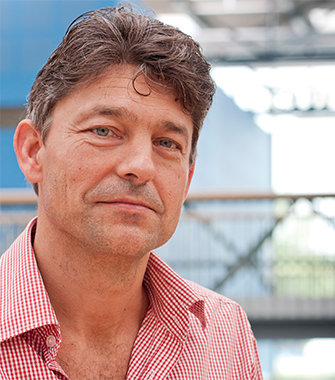Press release
Materials in motion
How can we make new materials – developed for industry, for example – useful for ordinary people? This is the subject of the research being done by Kaspar Jansen, Professor of Emerging Materials at the Faculty of Industrial Design Engineering at TU Delft. In his inaugural lecture at the Future Materials event on 17 June he takes us into the world of new, better and smarter materials that will radically change the products we are familiar with.
Mushroom threads
Investigating practical applications of materials that are too expensive at present but will be in common use in the future – that is the mission that Professor Kaspar Jansen has set himself for the new Emerging Materials group. He explains: ‘At present we use a lot of standard materials such as wood and plastic. How we can re-use materials is becoming increasingly important. Take mushroom threads, for example: fungi that harden, from which you can make flipflops.’
Smart materials
As well new materials we need materials that are smarter. The focus in the European Light.Touch.Matters research programme (part of Horizon 2020) is on developing smart materials to improve human well-being, which goes beyond the world of medicine. Kaspar Jansen has set to work on smart materials: ‘Smart materials are materials that can receive signals, for example through touch, or conversely provide feedback by lighting up (luminescence).’

This principle is clearly illustrated by the specially designed umbrella: as soon as a drop hits the umbrella the material lights up. Luminescent material has also been used in the Life Saver developed by VanBerlo under the Light.Touch.Matters project, a resuscitation vest that shows you where to affix the electrodes and gives feedback on whether you are applying enough pressure using green and red lights.
Design revolution
The new materials are also bringing about a revolution in design: ‘Whereas it used to be the designer who decided on the design of the product, it is now possible for consumers to decide for themselves. Take luminous paint, for example, which will become less expensive in future, enabling people to paint it on objects or textiles themselves. That’s useful, since luminous clothing improves road safety.’
More information
If you would like more information on materials of the future, we can arrange an interview with Kaspar Jansen. Please contact our Science Communication Adviser Wendy Dallinga on 06-425 720 41 or at w.m.dallinga@remove-this.tudelft.nl.
In the media
- Delta (Dutch only)
- De Ingenieur (Dutch only)